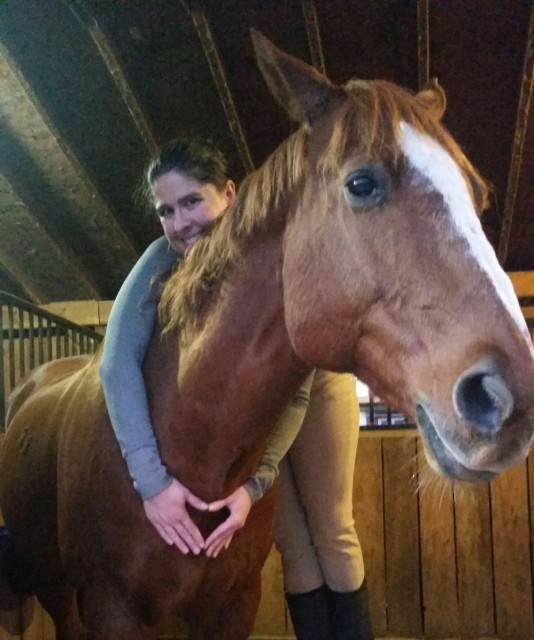I always want to root for the underdog, which is probably the reason that I ended up with my first horse, Ripley. He was quite the looker when we met over a decade ago, but Ripley passed through a large auction on his way to me, bringing with him a whole host of behavioral issues.
He isn’t the strongest, can’t jump the highest or run the fastest, but one of the things that I love about Ripley is that he always gives me his all. I’ve always said that my favorite horses are those with the biggest hearts — the ones who don’t hold back and will literally give you everything they’ve got. I value a humble horse with heart over more capable horses without it.
Of course, I’m not talking about physical size of a horse’s heart, but a recent article over on TheHorse.com does take a look at heart size in horses, or, more specifically, the effects of a physically large heart on your equine athlete. Risks such as murmurs and arrhythmias may affect horses have larger-sized hearts. You can check out the article here.
And then be sure to check out other headlines from this week in horse health news:
Feeding in Drought Conditions: Preparing to care for your horses in drought conditions does not happen overnight. In the face of pastures drying up, horse owners can gradually increase the amount of hay they are feeding so that their horses can adjust to a decrease in the consumption of fresh grass. Head over to TheHorse.com to learn about the nutritional considerations that horse owners face during drought conditions. [The Horse]
Low-Cost Gelding Clinic A Success: In response to the problem of unwanted horses, the Pennsylvania Equine Council, American Horse Council’s Unwanted Horse Coalition and the York County SPCA teamed up with Zoetis Animal Health Inc. to conduct a low cost gelding clinic in October. A total of 19 stallions from Pennsylvania and Maryland were gelded. The PEC hopes this type of event will become more common. [Pennsylvania Equestrian]
Is My Farrier a Biosecurity Risk? While it may be common practice to not share equipment between horses in an effort to practice good biosecurity, have you ever thought about other potential ways for bacteria or infection to spread? Check out this interesting commentary over at The Horse on how horse owners can help farriers prevent disease spread among horses. [The Horse]
Awareness Training for Large Animal Rescue: Equine Guelph kicked off a series of emergency response rescue courses with a workshop for Emergency Preparedness and an operations course for Technical Large Animal Emergency Rescue led by Dr. Rebecca Gimenez. The workshop focused on improving safety for horses and humans during emergency situations. [EquiMed]
Mushroom from Horse Dung with Antibiotic Properties? Swiss scientists have discovered a new protein, which has been named Copsin, that grows on horse manure and may have antibiotic properties. Copsin is said to have the same effect as traditional antibiotics, yet it is a protein, whereas traditional antibiotics are typically non-protein organic compounds. Researchers are working to explore potential applications. [Horsetalk]
Using DNA to Predict a Horse’s Athletic Potential: Scientists can now use genetic markers to predict a horse’s athletic potential. This practice is gaining momentum in the Thoroughbred racing community, with a roundtable conference recently held in Paris to discuss policy and industry best-practices. While the practice could spread to other disciplines, it’s important to highlight that the profiling only highlights athletic potential, not individual trainability. [The Horse]



















